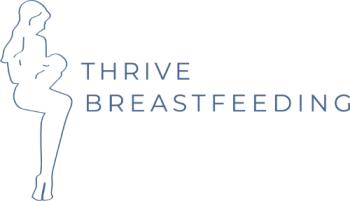Learn 68 Breastfeeding Terms That Moms Find Most Helpful
Here you go! If you are a new or expectant mom planning to breastfeed, keep reading. Learn 68 helpful breastfeeding terms and their definitions. Anything new in our lives can be intimidating. Fortunately, when it comes to breastfeeding, there’s no reason to worry! This blog post explains 68 different terms that you’ll likely come across when breastfeeding.

Terms To Know When You’re Breastfeeding
Lactation: Milk secretion.
Lactose: The sugar contained in milk.
Breast pump: A manual or electric tool that draws breast milk from the breast using suction.
Pumping: The process during which breast milk is drawn from the breast using a breast pump. It allows you to store the breast milk in the fridge or freezer for later use.
Alveoli: The small cluster of cells or glands that are responsible for producing and secreting milk.
Mastitis: Mastitis is an inflammation in which your breast becomes swollen, hot and painful. It is one of the basic breastfeeding terms every mom should know.
Duct: A passageway in your breast connecting alveoli and the nipple. It carries and stores milk.
Nipple: The area in the middle of the areola that releases milk through ducts (holes).
Breast crawl: An innate ability of newborn babies to crawl on their own and take the first breastfeed when placed on the mother’s tummy after birth.
Milk blister: A bubble over the top of the nipple caused by a blocked duct located close to the skin.
Overactive letdown: The milk gushing effect when you are starting a feed or a pumping session or when you haven’t fed your baby for a while.
Cradle hold The most common breastfeeding position. The baby lies across your body, supported by your elbow while your other arm is under the baby’s back.

Breast Anatomy & More Terms
Areola: The areola is the dark, round area that surrounds your nipple.
Flat Nipple: When the nipple is not protruding from the areola. This can cause breastfeeding challenges for some moms.
Nipple Shield: A cup made of plastic that shields the nipple while breastfeeding. It protects the nipple from damage in the first weeks of breastfeeding.
Engorgement: When the breasts are too full of milk, they can become engorged – swollen and sore.
Cluster Feeding: The type of feeding that usually occurs prior to a growth spurt. During this time, the baby wants larger amounts of food in a short amount of time.
Hind Milk: The richer and thicker milk produced right during the feed. It contains essential fats and nutrients that help the baby grow and develop.
Colic: A common condition during which the baby suffers from abdominal pain. It usually results in erratic crying and sleep pattern.
IBCLC: International Board Certified Lactation Consultants. It is one of the basic breastfeeding terms to know in case you need to seek help.
Flanged Lips: Open, extended, and slightly curled lips forming an oval shape. They are the sign of a good, deep latch.
Kangaroo Care: A skin-to-skin technique often used for premature babies. It helps release oxytocin, produces a sense of security, and stimulates feeding.
Clutch Hold: Also known as the football hold, the clutch hold is a breastfeeding position favored by women with twins, larger breasts, or by women after C-section. Like a football, the baby is tucked under the arm and fed.
Extended breastfeeding: When the baby continues to breastfeed past the age of 1 year.
Plugged ducts (blocked ducts): A plug formed by the milk when the blockage is at the nipple.
Foremilk: The milk that is released first, at the beginning of each feed. It is more watery and helps quench the baby’s thirst.
Lactation consultant: Trained specialists who offer breastfeeding support.
Galactagogues: Whole grains, chickpeas, fennel, broccoli and other foods, herbs or medicines increasing the mother’s milk supply.
Lipase: The enzyme in breast milk responsible for breaking down the fat.
Formula: Cow or plant-based milk that contains added nutrients and fats. It is chemically derived and dehydrated to form a powder. When mixed with water, it serves as a replacement for breast milk. It is widely used by mothers who are unable to breastfeed or choose not to.
Nursing bra: A special bra with drop-down cups enabling discreet breastfeeding.
Inverted nipple: A nipple retracting into itself. It can make breastfeeding more difficult.
Leakage: When lactating breasts leak breast milk from the nipple. This tends to happen when the breast is very full (close to feeding time), the breasts are pressed into or the nursing bra is too tight.

Breastfeeding Issues, Etc.
Blocked Milk Ducts: A blockage in the milk ducts restricting the milk from flowing. If not treated, it can lead to mastitis.
Immunity: Your body’s protection system that deals with infections.
Frenulum: The thin piece of skin in your mouth which joins the upper lip and gums. It is also the piece joining your tongue and the inner edge of your jaw.
Latch: The seal around the baby’s mouth. It is how the baby’s mouth attaches to your nipple when breastfeeding. Learn the simple steps for a good latch in my blog dedicated to one of the most basic breastfeeding terms.
Night feed: Breastfeeding during the night.
Flange: The plastic part between the breast pump and your breast.
Mastitis: A condition that signifies a painful breast infection caused by blocked milk ducts. Its signs resemble flu-like symptoms, and the mother should seek immediate medical assistance.
Let down: Occasionally painful sensation when the milk is released from the breast. Other times the mother cannot feel it at all.
Let down pains: The aching or burning sensation occurring during a letdown. It can also feel like pins and needles in your breasts.
Nursing pads: Breastfeeding pads are designed to absorb moisture from lactating breasts.
Feeding on demand: When the feeding depends solely on the baby’s appetite and is not timed to a clock.
Inflammation: An infected, red, warm, and swollen area that is often painful. You should consider seeking out medical assistance.
Oxytocin: Known also as the ‘love’ or ‘feel good’ hormone, oxytocin is released from the mother’s brain during breastfeeding. Other oxytocin-rich activities include baths, exercise, dog-patting, or hugs.
La Leche League: An organization that provides women with breastfeeding support.
More Helpful Breastfeeding Terms
Prolactin: A pituitary gland hormone enabling milk production.
Colostrum: A yellow substance produced for the first 3 or so days after birth. It is creamy, thick, and full of enzymes that boost immunity.
Liquid gold: Known also as the colostrum, which is gold in color. It is contained in the first feeds for the newborn before the production of milk.
Reflux: Often confused with vomiting, reflux is when a baby spits up swallowed milk.
Montgomery glands: Bumps on the areola that resemble pimple-like spots. They are responsible for the oils lubricating the nipple.
Reverse cycling: When a baby is hungry more at night than it is during the day.
Rooting: The nuzzling and head-turning when the baby looks for the breast to feed.
Nutrition: Healthy food supporting the baby’s growth and development.
Cooper’s ligaments: Ligaments functioning as a support to the breast tissue.

Nursing Remedies & Other Terms
Sleep feeding: Breastfeeding during the baby’s sleep. The most common position is either side or hovering over the top of the baby.
Cabbage leaf: A breast compression method to reduce swelling. Cabbage leaves are high in anti-inflammatory compounds and provide relief to the engorged breast.
Spray: Leakage of milk from a breast that is uncovered, stimulated, or before/mid-feeding.
Tandem breastfeeding: Breastfeeding two children at once.
Biological nursing: A relaxed breastfeeding position used also by women with smaller breasts.
Lanolin: A cream providing relief to cracked nipples.
Thrush: A yeast infection. This can occur where moisture is trapped and unable to dry/air properly. This can occur in the baby’s mouth and spread to the mother’s nipple and vice versa.
A yeast infection occurs in places that are unable to dry properly. It can spread both ways between the baby’s mouth and the mother’s nipple.
Expressed breast milk: When you pump or hand express to produce breast milk.
Nursing pillow: A pillow designed to support a toddler during breastfeeding.
Lip tie: A stiff or thick piece of skin behind the baby’s upper lip. Lip tie is a condition that prevents the upper lip from moving freely.
Tongue-tie: A stiff or thick piece of skin connecting the baby’s tongue to the floor of the mouth. Learn more about this condition in my blog dedicated to one of the most basic breastfeeding terms.
Questions about any breastfeeding terms?
Wouldn’t it be amazing to have one, designated expert to answer all your questions as you’re navigating breastfeeding? Let’s connect to chat about how I can be your go-to breastfeeding support person.
